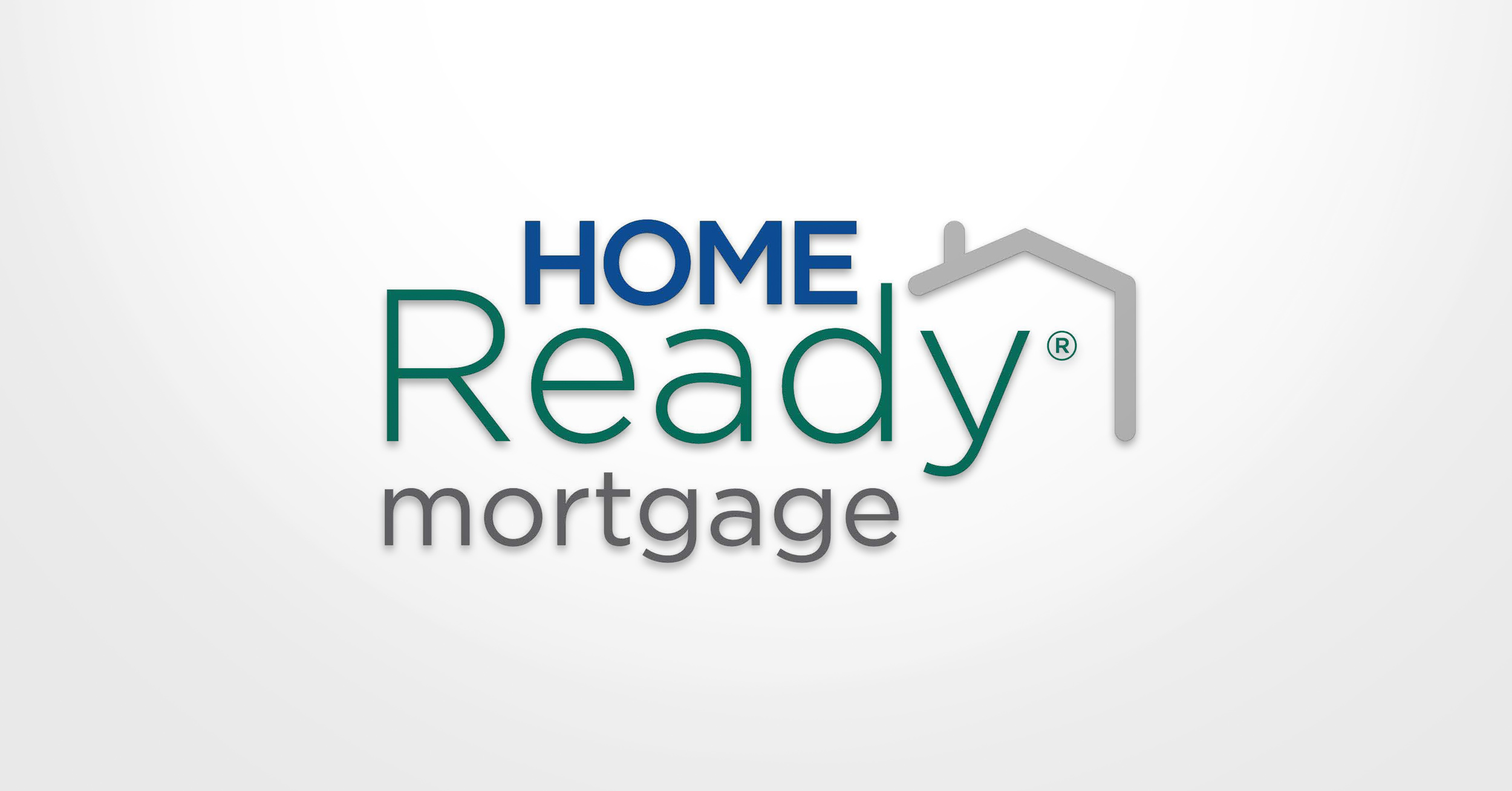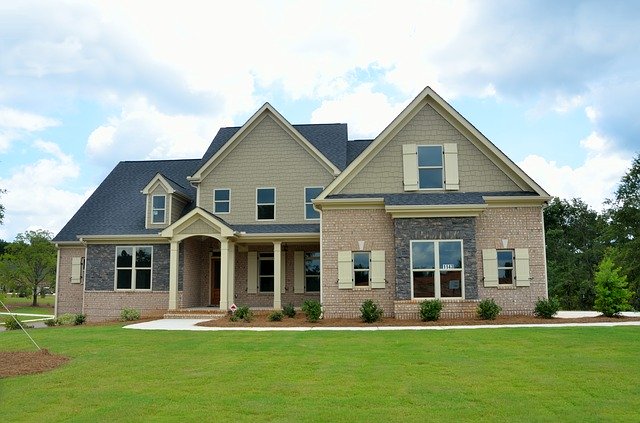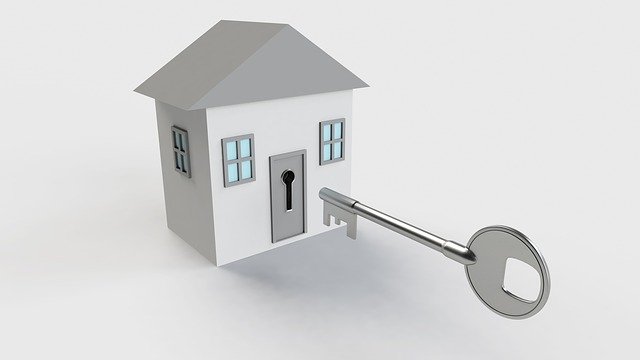
In this article
- Down Payment Flexibility
- Sourcing The Down Payment
- Cash-On-Hand
- Qualification With A Range Of Income Sources
- Co-Signer Income
- Boarder & Roommate Income
- Rental Income From Accessory Dwelling Units (ADUs Or "Mother-In-Law" Units)
- Income Limits On HomeReady® Mortgages
- Credit Scores And HomeReady®
- Reduced Mortgage Insurance Costs
- Educating Home Buyers
- Origins of the HomeReady® Program
- Applying For A HomeReady® Mortgage

Fannie Mae’s mission has always been to simplify the home-buying process. Its latest weapon in that struggle is the HomeReady® mortgage, and it’s a powerful tool that can help both first-time and repeat home buyers. HomeReady® Mortgages are the answer.
The chief goal of the HomeReady® program is to clear out roadblocks on the road to homeownership that might stand in the way of Millennials, minorities, and mixed families.
Some key HomeReady® mortgage features include:
- Down payments as low as three percent
- Down payments can include cash-on-hand, gifts, and assistance programs
- Reduced costs for private mortgage insurance
- Including the income of non-occupant co-borrowers in the qualification process
- Factoring income of non-borrowing household members into the approval process
- Including rental or “boarder income” from a rental apartment, mother-in-law-unit, or roommate in the qualification process
The HomeReady® mortgage is designed to outdo all other home loans when it comes to flexibility, exceeding even those loans (like FHA) considered ultra-flexible in the past.
Down Payment Flexibility
Lots of first-time would-be homeowners have been hamstrung at the start of the buying process by down payments. This is where HomeReady® Mortgages help.
A recent report that studied renters between the ages of 18 and 34 found that a significant majority of them (about 58%) considered down payments to be the greatest obstacle standing between them and homeownership.
This is exactly the issue Fannie Mae seeks to correct with the HomeReady® mortgage.
Sourcing The Down Payment
With HomeReady® mortgages, buyers only need a down payment of three percent. What’s even more significant is that they can assemble that three percent from diverse sources.
With most mortgages, borrowers are obliged to make a “minimum contribution” to their down payment from their own finances. The minimum contribution has to be met before borrowers can look for outside help (from other individuals or programs) in meeting their down payment.
HomeReady® mortgages feature no minimum contribution whatsoever. The entire down payment can be assembled from any source. The full down payment (and even closing costs) can, for instance, be funded by a parent or other relative.

Cash-On-Hand
The HomeReady® mortgage also gives borrowers greater leeway in using cash-on-hand for their down payments.
Mortgage lenders prefer to get their down payments from bank accounts. Borrowers who keep their money in other places, such as in cash reserves at home, have to open a qualifying account, deposit their cash, and wait 60 days so that they have a “clean” bank statement without unexplained deposits on it.
With HomeReady® mortgages, buyers can apply immediately using cash. Lenders are allowed to verify cash-on-hand through various means, but the provisions of the mortgage still speed up the process considerably for HomeReady® borrowers.
Qualification With A Range Of Income Sources
The HomeReady® program is particularly flexible in the way borrowers can calculate their income:
- Regular Income: This is the standard sort of income that any mortgage program will consider, including salaried or hourly employment, commissions, bonuses, and even tip income.
- Household Income: The income of household members can be added to a HomeReady® mortgage even if they are not going to be signatories on the loan. This is ideal for households that combine multiple families or generations, or unmarried couples who want to take out a mortgage in the name of only one partner.
Non-borrowers’ income is not simply lumped together with the borrowers when your lender is making an approval decision. Instead, it is considered a compensating factor that can be used to justify a loan approval even if your debt-to-income ratio is over 45 percent.
The debt-to-income ratio is found by comparing monthly income to monthly debt expenses, including credit cards and other loans along with the mortgage payment. If, for instance, your monthly income is $4,000 per month and your total monthly payments for a mortgage, credit cards, and student loans would be $2,000, your debt-to-income ratio would be 50 percent.
Debt-to-income ratios this high do not qualify for ordinary mortgages. HomeReady® mortgages cap the debt-to-income ratio at 45 percent. It is still possible to be approved for a loan if you fall outside this cap, and additional income being earned by other members of your household is one factor that could convince your lender to approve your loan.
Discuss household income in-depth with your lender to see if other household members can help you.
Co-Signer Income
In the HomeReady® program, income from non-occupant co-borrowers (parties who sign the loan but not live in the home being purchased) can be considered for qualification.
The classic situation here is that parents who own their homes are allowed to co-sign a mortgage loan with their children. Lenders will combine their income with the main borrower’s when considering the loan.
Boarder & Roommate Income
Homebuyers applying for HomeReady® mortgages can also use “boarder” income to improve their qualification position. Anyone who rents a space in your household qualifies as a boarder. To add this income to your other sources, you must have documentation showing that rental payments have been made for the last 12 months.
Boarder income can go a long way toward putting homeownership within your grasp. Bear in mind, you need to make sure your roommate/boarder will be able to move into the new home after you buy it. If they do, their rental income can be a great asset in qualifying for and paying for your mortgage!
Rental Income From Accessory Dwelling Units (ADUs Or “Mother-In-Law” Units)
If you are trying to buy a home that already has a rental space built into it, (for example, a basement apartment, a mother-in-law unit, or other accessory units) the potential rental income from that unit could help you qualify for a HomeReady® mortgage.
You can use the proposed income from an additional unit in the qualification process even if you do not yet have a roommate or renter lined up. That means that the 12-month shared residency history required for boarder/roommate income is not required here.
Your potential home must be classified as a 1-unit home with an ADU rather than a multi-unit home. When this is true, you can use rental income to qualify for your mortgage without any landlord experience or training. If you are buying a home with two or more units, it may still be possible to use rental income, but it is more likely that your lender will want to see education or experience that supports your suitability as a landlord.
Income Limits On HomeReady® Mortgages
There are limitations on allowable borrower income for HomeReady® mortgages that vary according to the location of the home being purchased. The goal of the income limitations is to ensure that the assistance provided by the HomeReady® program goes to borrowers who most need it. Here is an overview of the income rules:
- No income limit applies to properties located in low-income census tracts
- Borrower income is limited to 100% of the area’s median income in designated disaster areas and high-minority areas
- Borrower income is limited to 100% of the area’s median income in all other areas
Here is a basic example of how the income limits work. Say a buyer is seeking a home in Los Angeles County. Los Angeles’ median income is currently $67,200. If the buyer makes less than this, she can qualify for a HomeReady® mortgage on any property in the area. If she makes more than the median income, a HomeReady® mortgage would only be available if she sought out a home in an underserved area where the program’s income limits do not apply.
HomeReady® eligibility can be determined by referring to the eligibility maps Fannie Mae has published for every state. The exact boundaries are sometimes difficult to see; you will want to confer with your lender on the specific address of any property you consider buying to verify its eligibility and the income limit involved.
Credit Scores And HomeReady®
TheHomeReady® program is also flexible when it comes to borrowers’ credit scores. FICO scores as low as 620 can be approved.
For the best interest rates, though, borrowers will need a credit score of at least 680. Borrowers who have a credit score higher than 680 may have some rate adjustments waived by Fannie Mae.
Borrowers with high credit scores may get a better rate on a 3 percent down mortgage than borrowers with a traditional 20 percent down loan receive.
You need to be aware that lenders are allowed to impose credit “overlays” and require higher standards than Fannie Mae itself. You may want to consider seeking out a more flexible lender if your initial choice demands higher credit scores.
Reduced Mortgage Insurance Costs
Fannie Mae provides lower insurance costs to HomeReady® borrowers by reducing the amount of mortgage insurance coverage required.
PMI for a HomeReady® mortgage is only $124 per month. The reduction in insurance expenses allows HomeReady® borrowers to handle larger loans for the same total monthly cost.

Educating Home Buyers
A homebuyer education course is an integral (and mandatory) part of the HomeReady® program. The course is an online offering, allowing borrowers to complete it at their own pace.
The HBE course costs $75, which is a very modest expense in exchange for all the benefits of the HomeReady® program.
The education course also provides significant value to new homeowners. Self-directed research doesn’t always cover all the ins and outs of owning your own home, and the course ensures you receive the most important information. The homebuyer education course is an attractive proposition even for first-time buyers who are not using the HomeReady® program.
Origins of the HomeReady® Program
The HomeReady® mortgage program is the result of an extensive study carried out by Fannie Mae’s Economic and Strategic Research group. This group’s findings pointed toward a continual evolution in the diversity of the different groups seeking first-time homeownership.
Millennial homebuyers struggle with significant student loan debt that makes it difficult to save up a down payment. There are also growing numbers of people seeking to defray the high cost of housing by collaborating on home purchases. This includes first and second-generation immigrants who are willing to share a house between two families.
U.S. demographics are also changing, with multi-generation households becoming far more common. 57 million Americans lived in multi-generational households in 2012, roughly doubling where that figure stood in 1980. The HomeReady® program accommodates this shift by allowing children to use their parents’ income to buy a home suited to multi-generation occupancy.
Applying For A HomeReady® Mortgage
There’s no time like the present to start your journey toward owning a home. Checking your HomeReady® eligibility is a great way to begin.
It’s a surprisingly easy program to enter for both individual buyers and families. It’s a particularly good option to investigate if you are also considering an FHA loan.

The HomeReady® program is open to both first-time and repeat buyers. Get started now with an eligibility check and a free rate quote!

